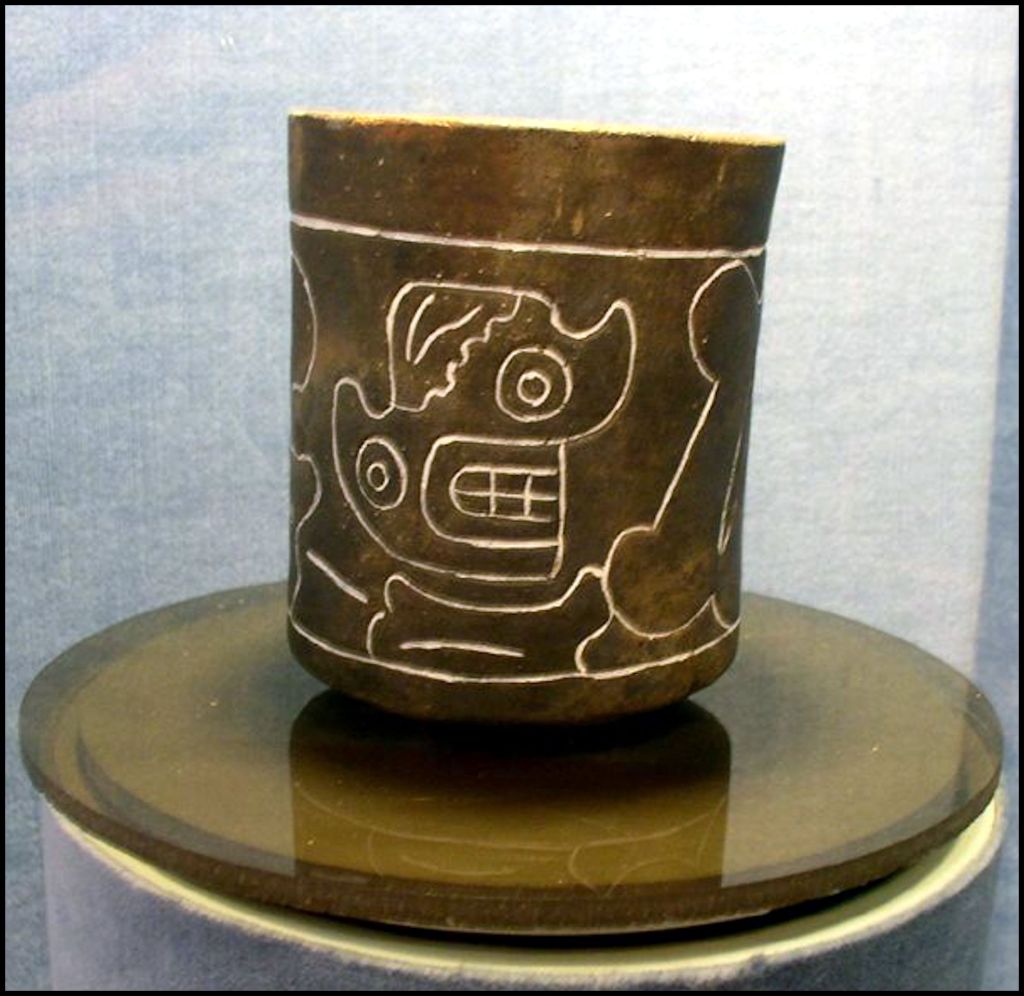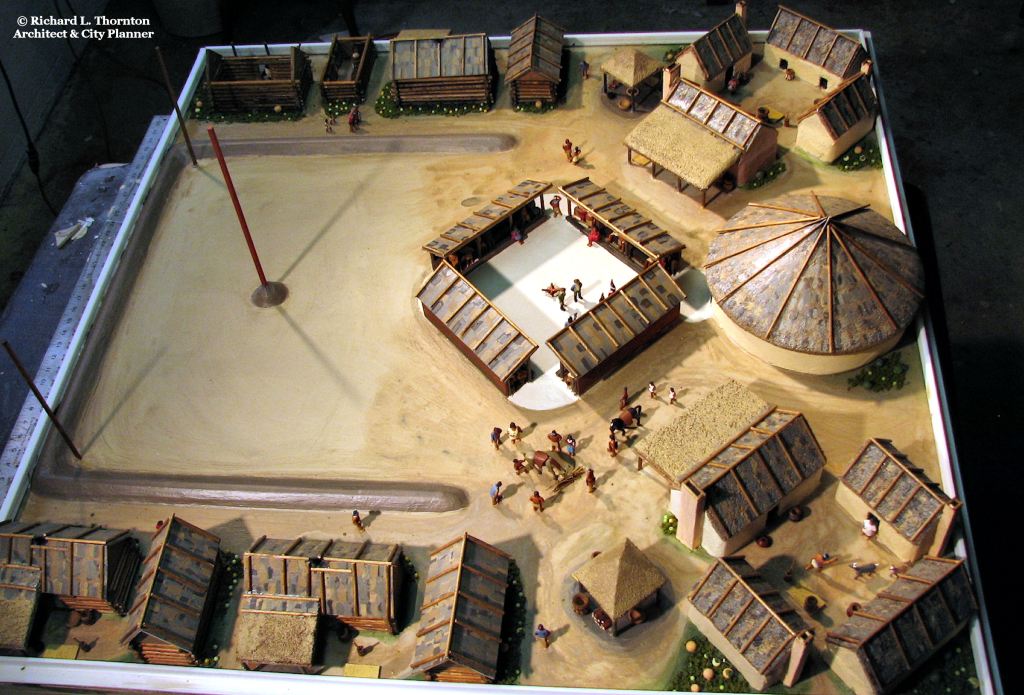by Richard L. Thornton, Architect & City Planner
One Summer In Mexico – Part Twelve
Cerro Gordo, Estado de México & Tepolztlan, Morelos
Our final article on Teotihuacan will not make any sense unless the reader is first provided information on the “red-haired giants” and practice of human sacrifice in Mexico. We will discuss human sacrifice in the next video. Down in Mexico things are moving in a faster pace than I can write articles in the 21st century. A couple of days ago, Alicia and I studied the Cuicuilco Pyramid together. She liked helping me measure buildings, so will be accompanying me this week to the Cholula and Xochicalco city sites in the States of Puebla and Morelos.
One of the biggest secrets maintained by 20th century archaeologists in the Southeastern United States was the presence of another race here, other than American Indians (we need a better word!). In Peru, they were called Paracausa. which means “Strong People from the Ocean.” In Georgia, USA they were called Paracusa-te. In Mexico, the mixed-race descendants of the red-haired giants were called Tōltēcatl, which was derived from the Totonac word for “town-dweller” or “town builder.” Most online references state that the word was derived from the Nahua word for a cat-tail, but this is wrong. Toltec tribes that lived in the region of Veracruz, where several branches of the Creek Indians originated, called themselves, Tekesta. This, in fact, was also the name of a major tribe in southern Florida.
That we know at all about the presence of Paracausa in Georgia is due to the writings of 17th century ethnologist, Charles de Rochefort, and 20th century archaeologist, Robert Wauchope. De Rochefort stated that the nobility of the Apalache-te (Creeks living in the highlands of Georgia) were called Paracusa-te. They worshiped an invisible sun goddess and were extremely tall, plus very, very brainy.
In 1939, Robert Wauchope discovered a large town on the Etowah River in the Allatoona Mountains near Canton, GA. He only had time for a few test pits, but in every burial every skeleton, whether an adult or a child, had a much larger cranium than most homo sapiens. He was puzzled, but had no time for further excavations.
Wauchope did not write a report or book on his 1939 study of North Georgia until 1966. In that book, he mentioned that Smithsonian archaeologist, Joseph Caldwell, had excavated the entire town in 1947. Caldwell had found over 1,000 skeletons with super-sized brain cavities. However, I checked Caldwell’s report on his 1947 Lake Allatoona Study and he barely mentioned this large town.
Some further searches on the internet revealed that Caldwell had been interviewed by a reporter for “The Red and Black” student newspaper at the University of Georgia. He interpreted the existence of over 1000 tall skeletons with super-sized skulls to a community-wide affliction with “hydrocephalus” (water on the brain) . *All who believe that stand up and sing the Battle Hymn of the Republic” in Latin! Caldwell never mentioned what he did with the 1000+ skeletons.

Readers will recall that in an earlier article in this series, Dr. Roman Pina-Chan, grabbed a book that he wrote on the Toltecs from the shelf in his office and then matched everyone one of the symbols on artifacts from Alabama’s Black Warrior River Basin with symbols found on a Toltec pyramid in Tula. What he was most surprised by was that the “skull and cross bones cups” at Moundville, were identical to those in Central Mexico, used to disperse the original recipe for Brunswick stew, called Pozole, which contained human flesh as its meat! That’s right, human sacrifice was practiced at Moundville!
Unfortunately, there was very little interest at the INAH in the Toltecs until the PRI oligarchs were thrown out of office in the year 2000. Since that time, ethnologists have been trying to find surviving Tolteca descendants. Most Tolteca were killed and eaten by the Mexica between 1150 and 1520 AD. We are talking about hundreds of thousands, perhaps millions of people being eaten. No wonder the ancestors of the Upper Creeks got the hell out of Mexico. Most of the survivors live in remote sections of Jalisco State in villages, almost identical to Muskogee Creek villages, but not the towns of other branches of the Creek Confederacy.


Oh . . . did I mention that the original name of the Allatoona Mountains near Atlanta, GA was Al-Aton-ni. That is an Apalache-Creek (my ancestors) word, which means “Place of – Aton – descendants. Aton was the name of the original Egyptian sun god and the traditional name of the people, who founded the first royal dynasty in Egypt! The truth is out there somewhere!

Richard, Another connection to Egypt found in Georgia…Great works. You are right about the University’s not connecting the dots on different peoples living on this landmass for a long time. Egypt and Peru (Para) have a long connection with the “exact” same stone works. The Toltecs wore the same head gear that extended over the ears like some I’ve seen in Peru’s artwork…this leads me to conclude the Toltecs had trade Sea / roads cities from St. Louis…Mexico… Peru. At the time of 1540 many towns used Peruvians names along the Western Tennessee (Tana-se) river.
LikeLiked by 1 person
Tanasee is the Anglicization of the Creek, Taenasi, which means “Descendants of the Taino Arawaks”
LikeLike
Richard, It’s clear that the Arawaks, Creeks, Cherokee, Sokee, and Tokah/ Yuchi all made large circular meeting halls….so there must be some connections with all of them. Perhaps they all originated or migrated though England / Ireland as the druids Celts made the same type of buildings.
LikeLiked by 1 person
Ugarit originated Hyksos? Seafarers from Northern Levant. Adon the inspiration for Dan? Druze, known astronomers, have high rates of X haplogroup. Not sure how Thonmas Worthington nailed the naming of the “Adena” culture so well. Tempted to think they are part of the early dynasty (with the focus being mostly female sun goddess worship then), Orkney, Great Lakes Copper Complex and then on down to Poverty Point, Watson Break, and Bilbo for export back to the Northern Isles or Mediterranean or Egypt and eventually can be seen in the Adena culture, Paracusa, and Teqesta, etc. Canaanites and Phoenicians Civilizations seem to be very misunderstood. Really more of a trade network than an empire. They came back to wreck havoc as the sea peoples after the forced exodus and then the Amarna “Aten” revolution failed.
LikeLiked by 1 person
It’s funny Richard that you talk about people with large heads, I had a friend that used to call me “Bucket Head”.
LikeLiked by 1 person
Of course, we are talking about humans, who looked like the Coneheads on Saturday Night Live.
LikeLiked by 2 people
My head isn’t cone shaped but I guess it’s a big one. cranium
LikeLiked by 2 people
Wow
LikeLiked by 1 person